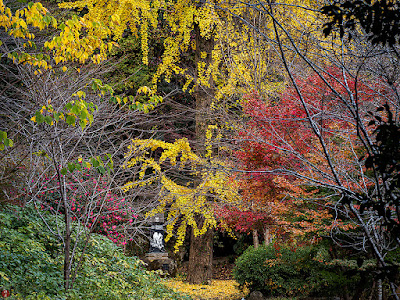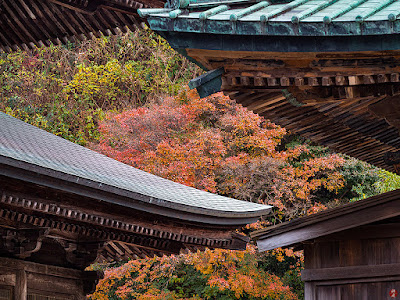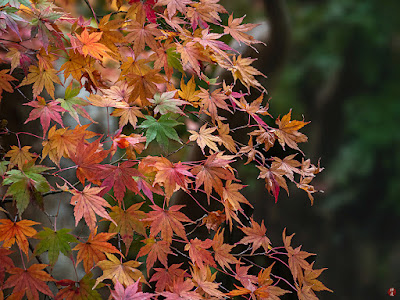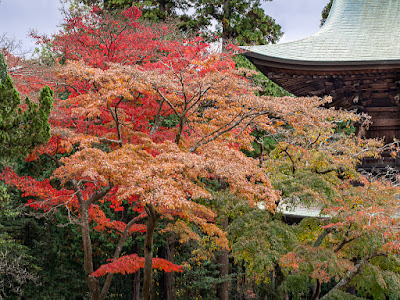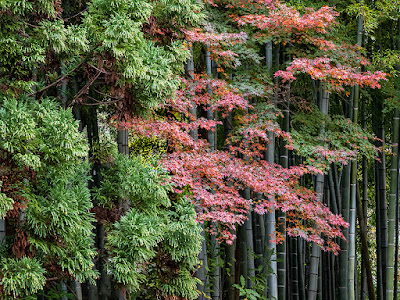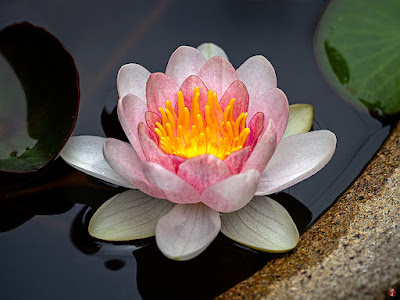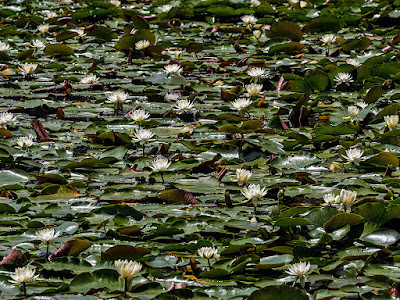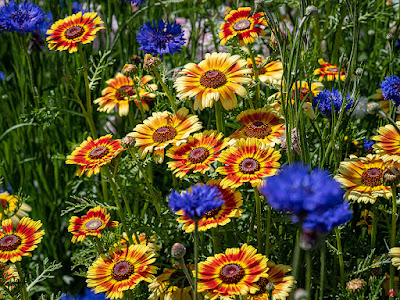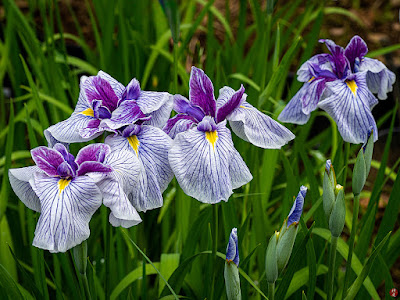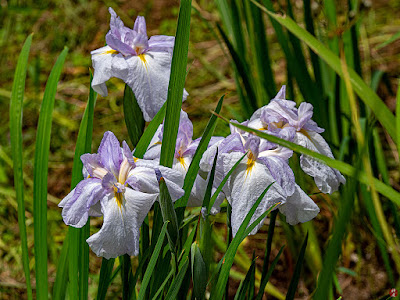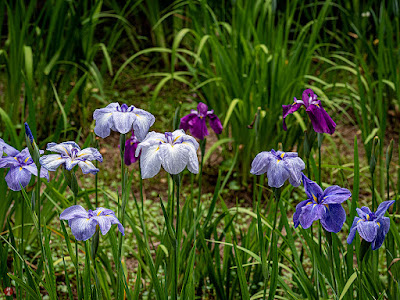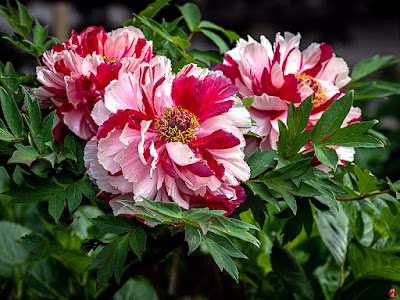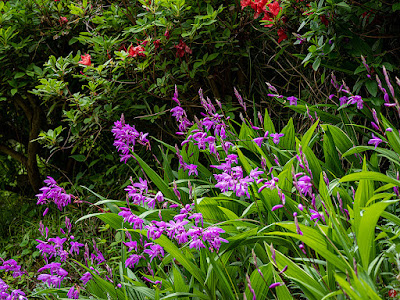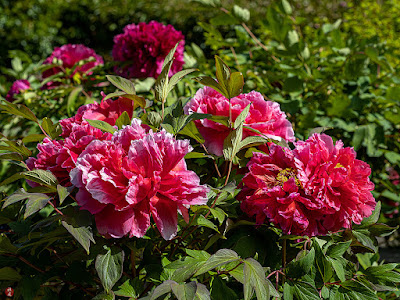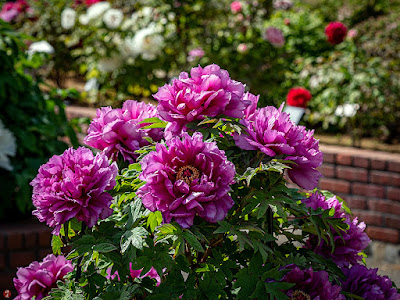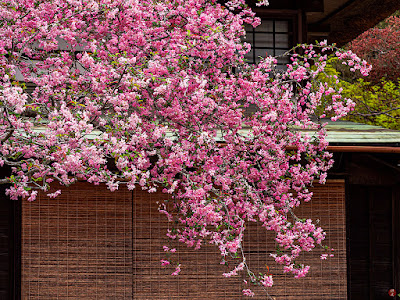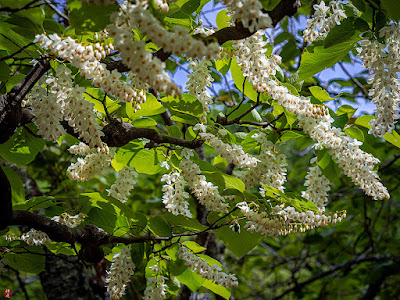Just before the arrival of pale cold winter, being stimulated by a sudden drop in temperature, the various green leaves of deciduous trees are hurriedly becoming dyed in vivid hues of flame, creating a dazzling mosaic of autumnal tints.
The stone monument of Kanzan and Jittoku, which was donated by Kanzan-ji Temple in Suzhou of China, is standing still in this grove. These legendary Chinese Zen monks of Tang Dynasty, whose legends symbolize the eccentric spirit of Zen, seem to be enjoying this autumn-colored extravaganza, dancing with great glee and laughing uproariously.
As if to compete with the autumn leaves for beauty, the bright magenta flowers of Kantsubaki (Camellia in the Winter) are coming into full bloom and adding another graceful colors to this late-autumn spectacle.
